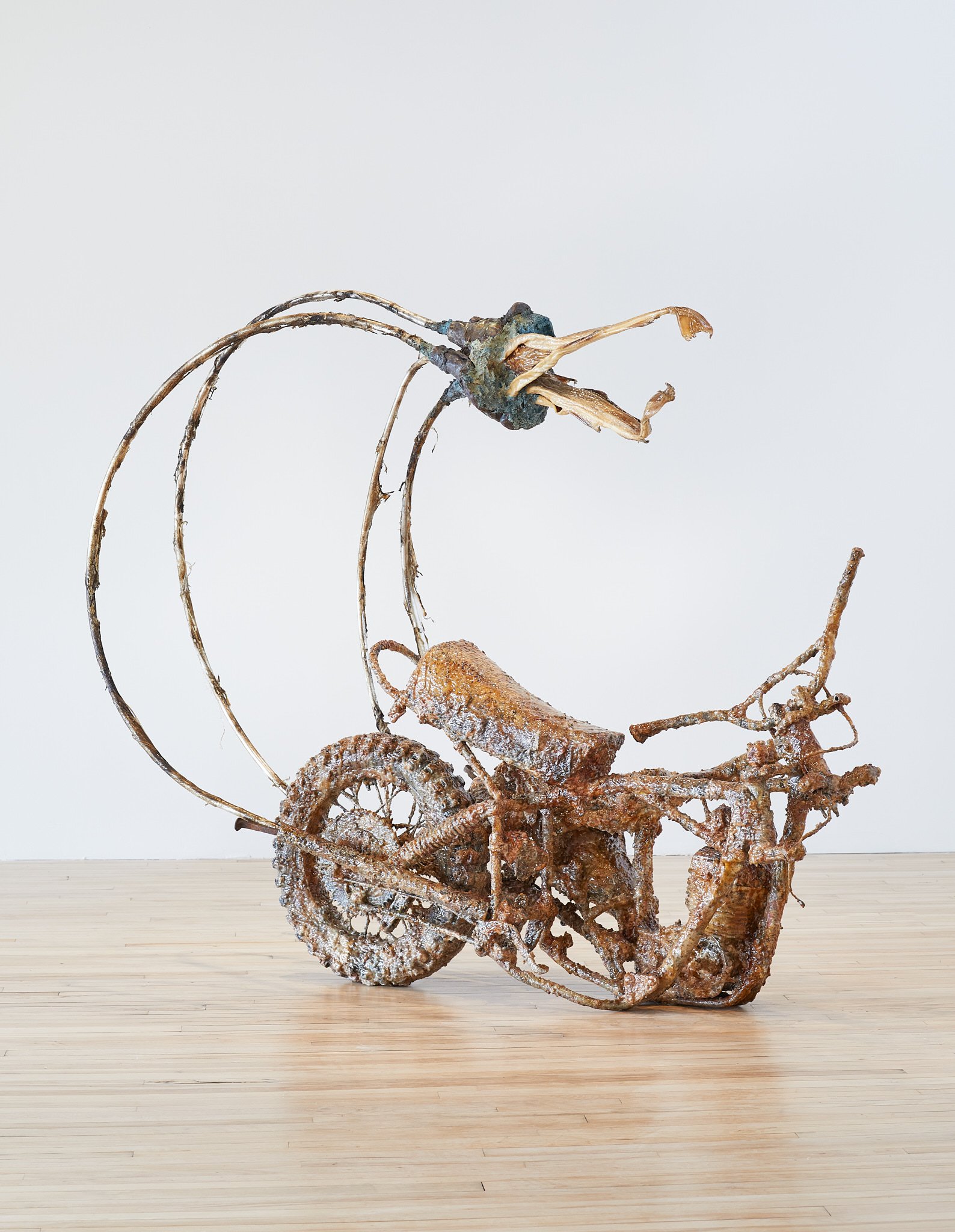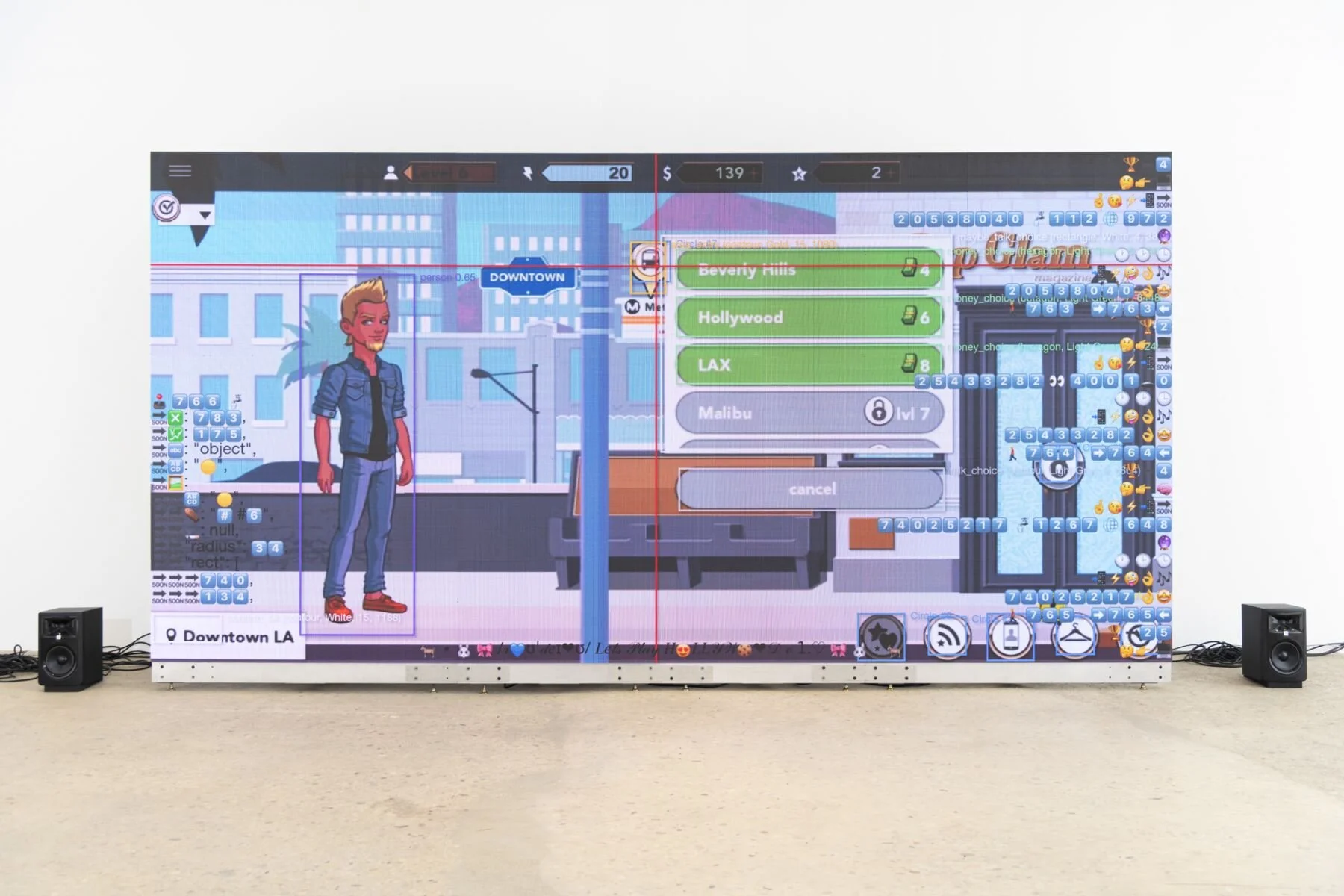Zac Hacmon at The Border
Zac Hacmon: Beyond the Pale
Curated by Eva Mayhabal Davis
The Border Project Space
56 Bogart Street, Brooklyn NY
February 14 to March 15, 2020
The idiom “beyond the pale” is said to have several origins in time and place. The word “pale” derives from the Latin palus, meaning “stake” (from which we also get the word “impale”) and refers to a barrier composed of stakes used to mark territorial boundaries that could be crossed by some but not by others.
One well known use of the term comes from the Russian “pale of settlement” instituted in the late 18th century. This pale demarcated the territory in which Jews were allowed to settle; someone venturing “beyond the pale” was committing an offense against the tsar that could lead to retribution against the community as a whole. The term “pale” has also been used in reference to the British subjugation of Ireland and, in America, to the forced relocation of Native Americans to reservations.
Installation view of Beyond the Pale by Zac Hacmon. Image courtesy of the artist. Photo by Etienne Frossard.
In all cases, “going beyond the pale” means crossing a line that shouldn’t be crossed. This idea is particularly relevant in this era of the multi-billion-dollar border wall, and a show titled after the idiom recently opened at the appropriately named The Border Project Space. Zac Hacmon’s Beyond the Pale, curated by Eva Mayhabal Davis, is a sculptural and sound-based installation that draws from current and historical border conflicts to create a monument to those displaced, divided, and victimized by both physical and conceptual barriers.
The exhibition features two large sculptures that resemble caltrops (which are similar in shape to children’s jacks), covered with white bathroom tiles and having metal vents on the ends. Their shape is modeled after a fortification called the “Czech Hedgehog” used by both sides in World War II. It was first used to fortify the Czech border against a possible German invasion, but it never saw action on that front. The Germans used Czech Hedgehogs themselves as part of their Atlantic Wall to stop Allied tanks and machinery from advancing. The Soviets put them to effective use in urban warfare, as a single Hedgehog could blockade an entire street and halt advancing forces. Czech Hedgehogs are physical manifestations of the idea of borders in general: barriers that limit movement for some—tanks, for example—but allow others, such as infantry, to pass through.
Installation view of Beyond the Pale by Zac Hacmon. Image courtesy of the artist. Photo by Etienne Frossard.
Getting close to Hacmon’s tile-clad Hedgehogs, one hears sounds emanating from the metal vents. The audio isn’t blasted into the gallery, though; the listener has to get uncomfortably close to the vents to hear anything. These sounds are tied to a present-day border conflict—Donald Trump’s attempt to establish his own “pale” at the Mexican border at extraordinary human cost.
The sounds come from a variety of sources. One is an audio recording of the artist’s trek through the Sonoran Desert on a migrant trail. Another tells of a tribe whose land is literally divided by the border: a third of their people live on the Mexican side, cut off from the rest by a political barrier imposed on them by a foreign power. Others are narrations of individual journeys, told by migrants and asylum seekers. Perhaps the most affecting is a poem by Marie Vogl Gery, an ode to a nameless baby whose body was found on a desert trail. These are the voices of a tiny fraction of those affected by the dehumanizing atrocities taking place at the border, all in the name of some nebulous sense of “security” or, as many have said, just out of raw hatred.
Installation view of Beyond the Pale by Zac Hacmon. Image courtesy of the artist. Photo by Etienne Frossard.
Hacmon’s Hedgehogs represent the horrors of historical border conflicts and their current instantiations. Their physical form recalls the atrocities committed before and during World War II, a history that seems to be repeating itself today. In America visas can be denied for no reason other than Donald Trump not liking someone’s country of origin, and concentration camps already exist to detain migrants captured by ICE and Border Patrol.
Art is powerless to solve problems of this magnitude, of course. But Hacmon’s work does serve both as a tribute to those affected by these horrors and as a warning that, unless we rise up and turn the gears of history with our own hands, these horrors will pale in comparison to what is coming next.













